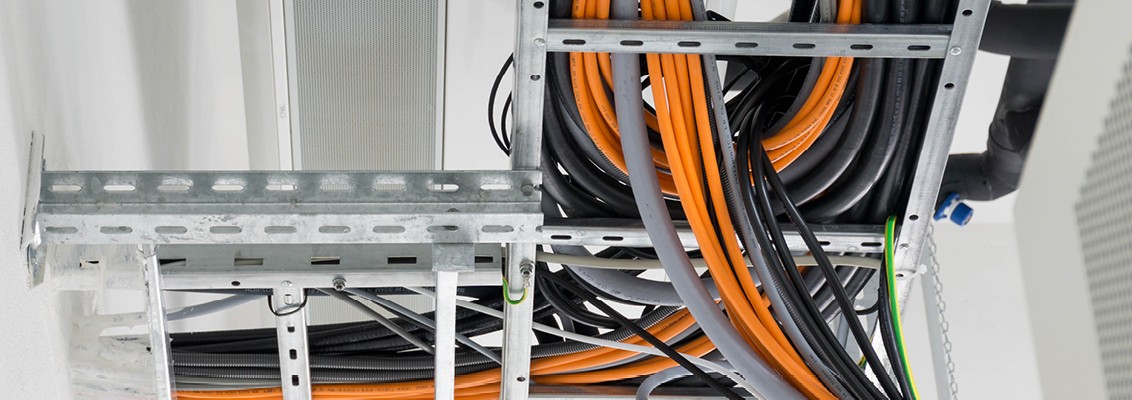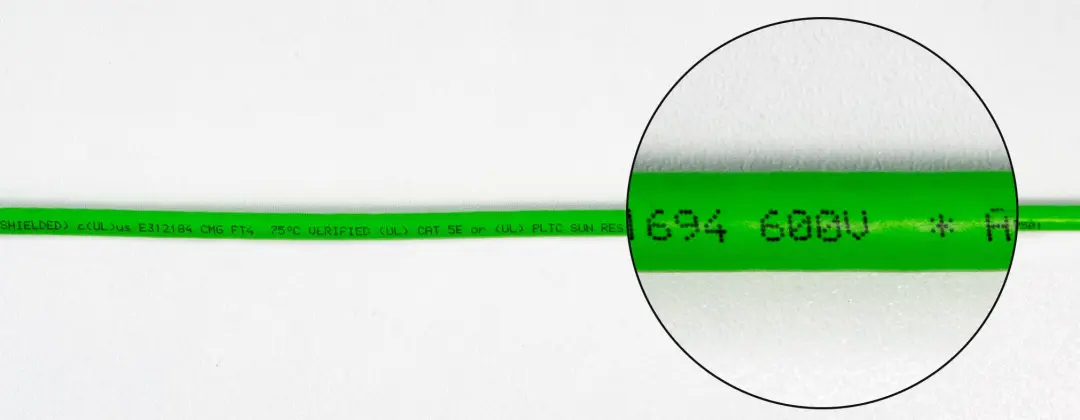UL Approval up to 600 Volts for Data Cables
Why users are increasingly demanding higher dielectric strength

Data cable users are increasingly demanding voltage specifications and approvals from the American testing and standardisation organisation Underwriters Laboratory (UL). However, data cables are neither designed for the transmission of heavy current nor are they used for this purpose in practice. The reason for this trend lies elsewhere - and has its origins in the installation of so-called cable trays.
Cable trays are mainly used in building cabling, but also in mechanical engineering and industrial automation. They are support structures for cables and electrical wires and are usually made of steel or stainless steel sheet or plastic. The trays frequently have several chambers where installers can lay cables with different functions and voltages separately from each other. Between them are shielding plates to avoid interference - for example from electromagnetic waves. Depending on the installation conditions, the cable tray can be part of the machine cabling or part of the building cabling - this is determined by the UL inspector.
When a new data cable is laid in a production hall with an existing support system, it may happen that a relevant chamber is not intended for this purpose or is already fully occupied. In this case, the installer inevitably must lay the cable in the next chamber - where there are often power cables with up to 600 volts dielectric strength, and in rare cases even 1,000 volts.
Same dielectric strength for cables laid together
This is where the UL standard enters the picture: it requires that all cables laid in a chamber have the same dielectric strength. Although a data, sensor or bus cable is never operated at 600 volts, the dielectric strength must appear on the label. Otherwise, the inspector may refuse approval, or the installer will have to subsequently use a protective conduit or replace the cable in order to obtain an approval from the certification company. However, the UL listing UL444, which usually applies to building cabling, explicitly prohibits the printing of voltage information on communication cables - a fact that contradicts the wishes of users, who increasingly require precisely this information.
In order to meet the requirements of its customers, HELUKABEL has, for example, provided its Ethernet cables of the PROFInet series with additional UL certifications, so-called AWM styles (Appliance Wiring Material). These guidelines, which originate from machine and device cabling, ensure the desired higher dielectric strength of the cables and allow for the corresponding imprint, which is required for successful approval. However, this does not permit users to lay data cables together with power cables without further ado. This is because the UL approval includes a dielectric strength test, but not an electromagnetic compatibility (EMC) test. Therefore, despite the extended certification, data and power cables should be laid separately or at a distance, if possible. If a joint installation is unavoidable for space reasons, for example, the installer should carry out an EMC test in order to avoid any possible interference.

UL specifications also required for machine cabling
Whether a cabling system is for a machine or a building cabling system, the inspector decides which standards apply. In machine and plant construction, drag chains are often used for laying both power and data cables - basically here they are nothing more than a mobile form of a cable rack. However, UL does not have a fixed standard for the configuration of drag chains. Here, much is left to the discretion of the inspector.
In recent years, however, about 30 per cent of UL inspectors have transferred the requirement for the same voltage range from cable trays to machine cabling and drag chains. Increasingly - if cables have not been laid separately or cannot be laid separately - the same dielectric strength of data and power cables is required. Therefore, the demand for cables with the corresponding UL approval is also increasing. With its comprehensive portfolio of data, network and bus cables, which are approved according to both UL444 and AWM, HELUKABEL offers the optimum solution for every application - including the dielectric strength required by the UL standard.
